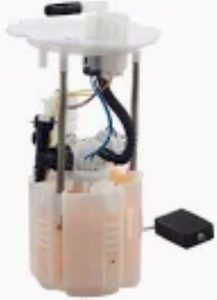The first reason for fuel pump relay failure is usually electrical issues, overheating, or just wear over time. The job of the Fuel Pump relay is to control the power that gets sent to the pump, which means if it fails you may experience stalling or a no-start condition because fuel supply has been cut. An electrical surge (often caused by poor wiring or a worn battery) can cause the relay to be overloaded. For vehicles older than 10 years, the rate of relay issues is even higher, rising by approximately one-fifth due to particularly worn electrical systems.
Another big relay problem is heat. Relays are prone to high temperatures as well and long-term exposure can cause melted internals, which is the same result of not having those contacts close like they need to be for your fuel pumps. This is in-line with the high placed relays; they wear out sooner when continuously exposed to engine heat such that their life expectancy decreases by almost 15% per-engine-component-heat-cycling-based research. Heat managementFor temperatures above 65ºC, relay failure rates can increase by up to 10%, so it is important for relays in hot countries.

Moisture and corrosion are two more common causes, behind relays failing. The humidity in some regions can lead to moisture within the relay housing, leading to corroding joints and increasing [resistance]. This 2022 study on automotive found out that the cars in coastal areas are likely to have failures in fuel pump relays up by an average of approximately 18% at varying districts because it was exposed through increased weather as well. To mitigate this risk, an hermetic seal therearound the relay assures proper insulation working over time to utilize for linking of all those elements.
Relay wear with age is a common problem in high-mileage vehicles. The contacts that come in the relay degrade as time passes, and this is ultimately what causes such poor fuel pump activation. Industry experts advise people to replace the pump relay every 50,000 to 75,000 miles because it is better than having a last minute replacement and this one can be started at working smoothly except until when replaced mainly older models where parts are more likely from wear out. Routine check-up- A regular inspection can ensure catching the early signs of failure, including strange clicking noise or delayed fuel pump response.
To learn more about maintenance and replacment options for your Fuel Pump today, having an understanding of how relays somtimes fail will provide you with the important knowledge that could very well save on a tow truck charge when preventing random engines stalling issues in result to no longer recieving fuel delivery.